
Protect Your Plumerias Over Winter
Prepping & Protecting Plumerias for Winter In Southern California
By Mike Atkinson
While plumerias adapt well to our temperate Mediterranean climate, the dormant period here is the most dangerous time of year, especially for those growers inland, where it gets much colder. (Keep in mind that plumeria’s native habitat in the tropics rarely gets below 60 degrees.)
Below is what I’ve learned growing in a hostile winter environment in eastern La Mesa in San Diego County (many nights in the 30s and usually a dip into the high 20s at least once a year). Remember, plumerias LOVE neglect, especially in winter. I’ll be sharing the safest tips for my climate, which can be followed anywhere just to be safe.
In Southern California the farther you get from the coast, the more chance of winter damage for plumerias. Generally, within 15 miles east from the coast is a safe area. The exceptions are valleys – like coastal valleys, which can get as cold or colder than eastern regions.
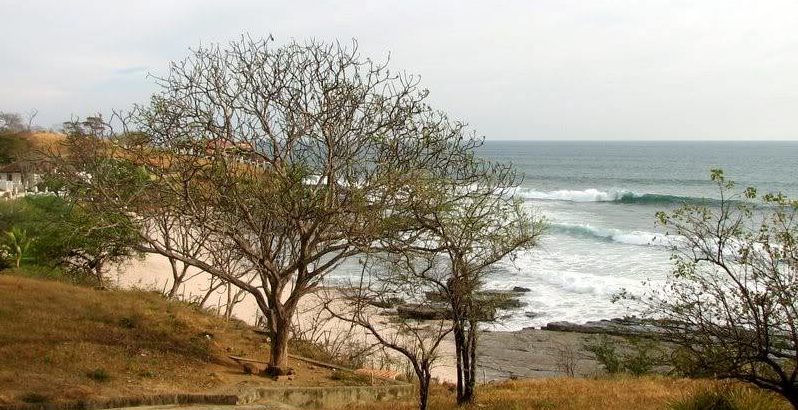
Not Like Home
It’s helpful to know that the reason plumerias go dormant is that winter in their native, tropical home is the dry season. Plumerias get most of their water from the roots, up through the plant, and then transpire (think perspire) the moisture out through the leaves. By dropping their leaves, they stop the process of transpiration and the roots can go to sleep, no longer taking in moisture and nutrients for the dormant plant. Even though they’re not in the tropics, this is still their behavior here.
Nighty-Night
Dormancy is activated by a decrease in sunlight in a day (aka, photoperiod). That started in June at the Summer Solstice but really kicks in after the Autumn Equinox in September. That, and a reduction in temperatures, lets the plants know that winter is coming. Dormancy doesn’t happen overnight. It’s a very slow process to start and end. For me, most of my plants are in full dormancy by the end of the year.
In late fall and early winter, you may still see plants slowly pushing out new leaves, maybe even flower stalks/inflos, which come from stored energy. But they are still going into dormancy.
Feed ’em?
In dormancy, the roots go to sleep and stop delivering nutrients to the plant. So applying fertilizer over winter is just a waste of money. Plus, if they are liquid fertilizers, they can promote root rot. But I do give the plants one last feeding in late October/early November – just before dormancy – with nutrients that can help them fight off cold damage. You’ll note that we do not feed synthetic fertilizers (like Osmocote, rose food, Excalibur, etc.) because they will promote new growth. That new, young growth is more susceptible to tip damage over winter. Here is the recommended feeding:
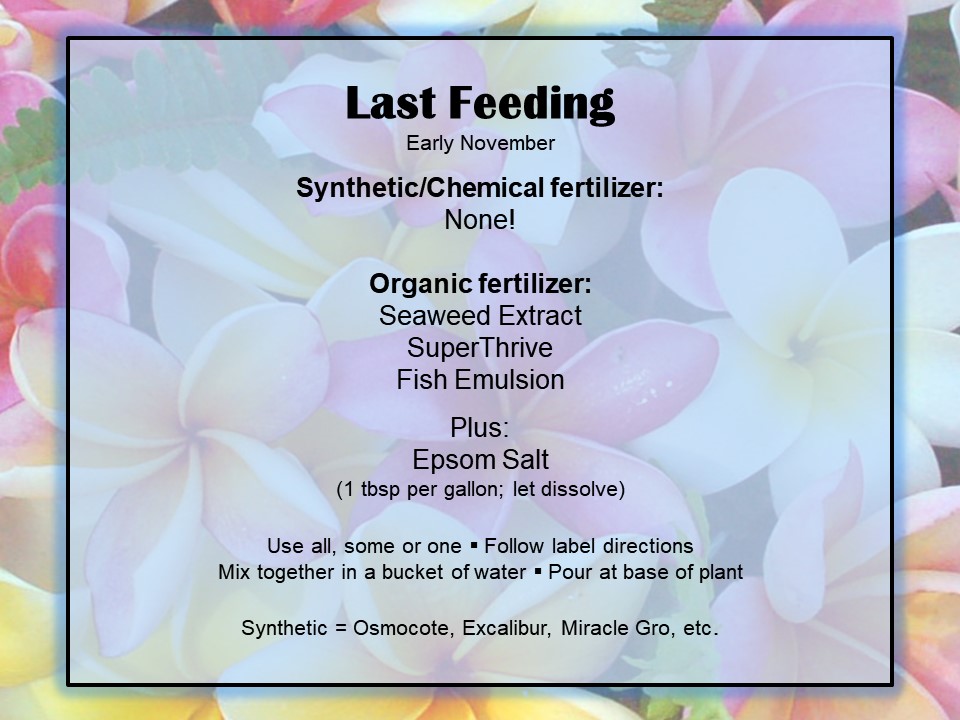
Water?
Simple answer: No. That’s why many people say “No leaves, no water.” Some say not to water them from Thanksgiving to St. Patrick’s Day. (While simplistic, they are still a helpful guide.) This is what we were taught by veteran growers when we started attending plumeria society meetings many years ago, and it still works. Plumerias rarely get much water in the tropics over winter in much warmer temps than we get. By late December/early January they completely stop pushing new leaves and blooms. That’s your clue they’re dormant. But their need for water is drastically reduced starting as early as late October, depending on the weather.

If your plants are not in warm storage (house, heated greenhouse, etc.), then watering the soil is not recommended. Just like all deciduous plants, when plumerias go dormant, they have stored up all the water they need to survive over winter. Wet roots and colder temps are a recipe for root rot, which can kill an entire plant.
A good example is the warm winter of 2016. Rarely do we get frost after mid-February in any year. Because of the unusually warm temps that year, some growers started watering their plants that month. Then, an uncommon frost hit us the last week of February. Many lost plants due to root rot as a result. Since the roots are asleep, they don’t need water or nutrients. Play it safe.
In autumn and spring, it’s not uncommon to get hot spells. If that happens, make sure your plant’s soil is at least moist.
Wrinkly?
What if your plants are getting wrinkly, a common symptom of dehydration? I suggest spraying/misting them off with water every couple of days without soaking the soil. Or bring it into a warm environment and water the soil for the rest of the cold season.
Also, in every case I was presented over the years of dehydrated plants, it was due to an already-weakened plant that had existing root problems, not because of a lack of water over winter.
Poor Leaves
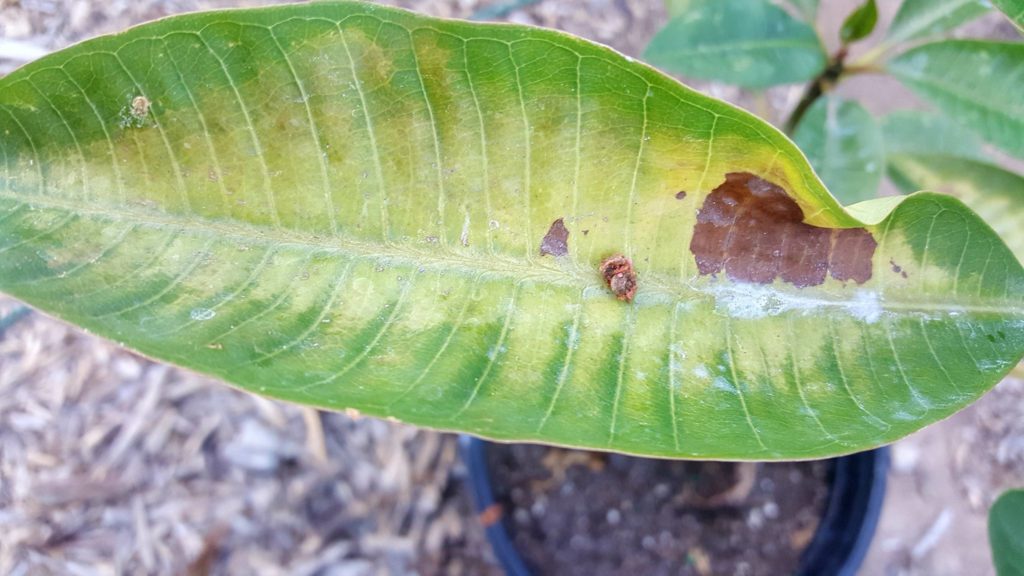
Too many of us think the state of the leaves tells us the state of the plant. That is rarely true with plumerias. So, starting in autumn through winter, you’ll see more and more leaves turn yellow and fall off. Normal. You’ll see them get sunburned. Normal. When cold temps come, you’ll see them get cold burn. Normal. If it makes you feel better, just cut off those leaves, though I prefer to let nature run its course.
Stay Awake!
It has been proven that plumerias can be forced not to go dormant, but it requires heat and a mimic of sunlight from the growing season. Some accomplish that in their home and others in greenhouses. The concern with a greenhouse is that even during winter, we can get hot days. If the greenhouse is left closed during those days, they can get cooked in there.
Frosty Is Coming to Town!
We always get one or two frosts every winter where I am. Here is what I’ve learned from other growers and meteorologists. First, wind is our friend, as it keeps frost from settling on the plants. Valleys are more dangerous because they do not get as much airflow. That’s why large growing operations, like for citrus trees, use industrial fans during cold weather. I use them for my coldest growing area.
Clouds are also our friends. Over the day, plants, the ground, and most things on Earth absorb heat from the sun. At night, as it gets colder, they release that heat back up into the atmosphere. Clouds – even clouds in storms – keep that heat trapped and keep temperatures warmer.
That means that clear skies are not our friends. Sometimes, the coldest low temps come the next night or two after a storm blows out and the skies clear. The lingering effects of a cold storm combined with a clear sky can really wreak havoc on our plants.
It helps to understand that the coldest temps of the day happen between 5:00 am – 8:00 am. That’s the most important time to protect our plants.
Many people protect their plants when temps get into the low 40s, others when it’s in the mid-30s. Fortunately, those temps don’t last long, only a couple of hours or so. The danger is when those lows are sustained over many hours, like what happened in the last freeze (which was not forecasted) in San Diego in January 2007. (We lost 75 plants in the ground.)

Protect & Preserve
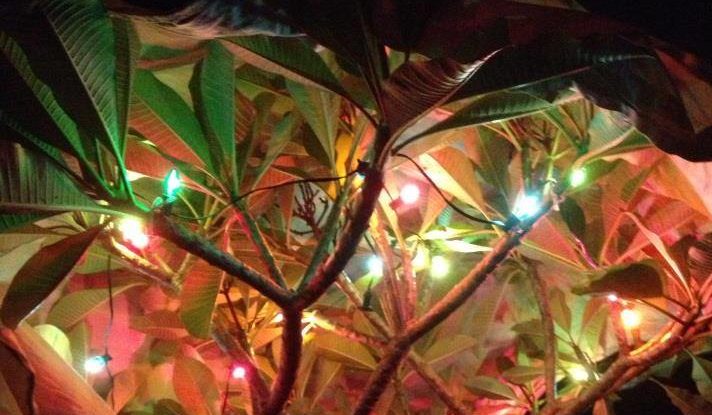
The best protection is a warm, covered environment. Most people can’t bring them inside where they live and can’t afford heated greenhouses. The next best solution is to put the plants under cover. Any kind of shelter can be used: Unheated greenhouse, under a tree with thick foliage, eaves, garage, covered patio, etc. (Note: Do not put pots on cement because it gets so cold over winter. At least put layers of newspaper or blankets or set them on pallets.) Putting them under cover keeps frost from settling on the branches. Cover your younger, smaller plants in the ground with anything but plastic – frost cloth available at nurseries or online, or use old blankets or sheets from thrift stores. (My more mature plants in the ground rarely have cold damage.) It’s best to cover them all the way to the ground to capture the escaping heat overnight from the soil. You can also use Christmas lights to increase the heat on the branches. But they must be the old-school lights that produce heat, not LEDs!
Another effective protection is insulation. Cover the area around the base of your plants in the ground with mulch (commercial or chipped trees). Make sure it’s 3-4″ thick to be effective in protecting the roots from cold damage.
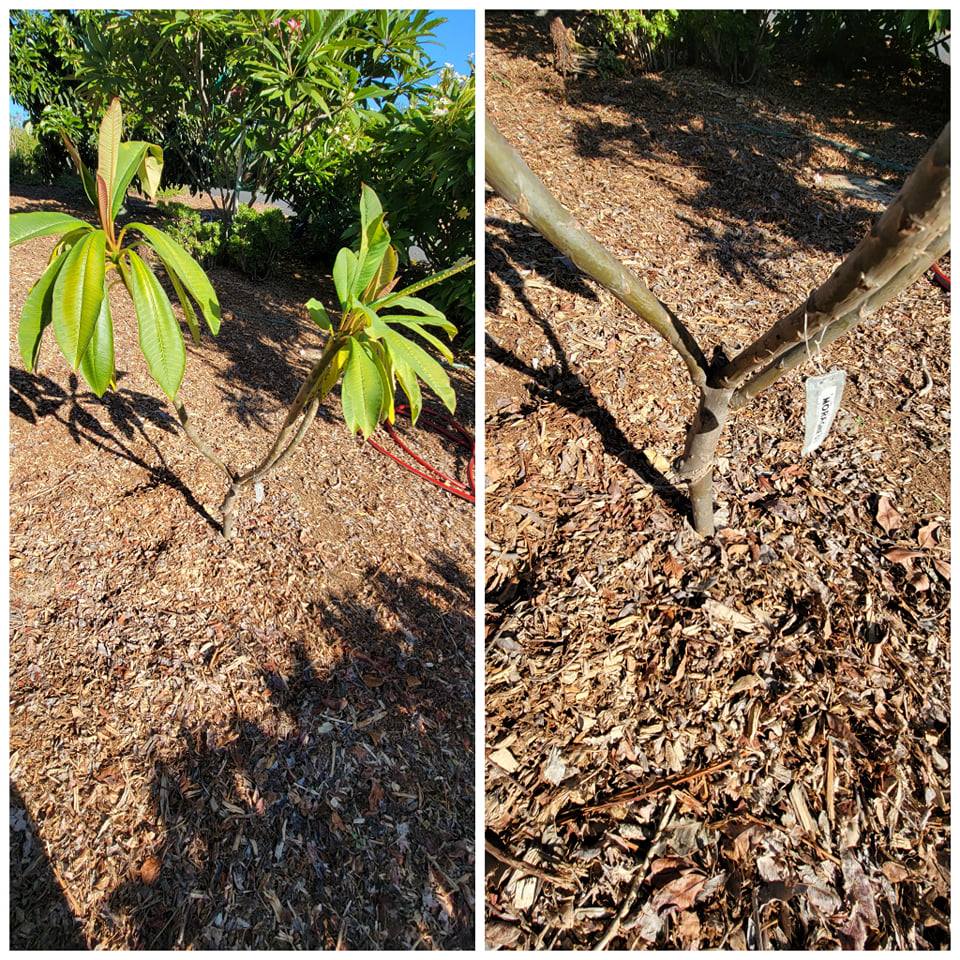
Damage Control
How do you know if your plants are okay after cold temps? It’s hard to know right away. Most damage takes time to manifest. There are two most common types of cold damage for plumerias. The first is branch tip damage. As frost settles on them, it causes the soft flesh inside the branch to rot. You can see it as the branch turns to dark black over a few weeks and gets soft. Slowly over time that rot can travel down the branch and can even make it all the way down to the roots to kill the entire plant.
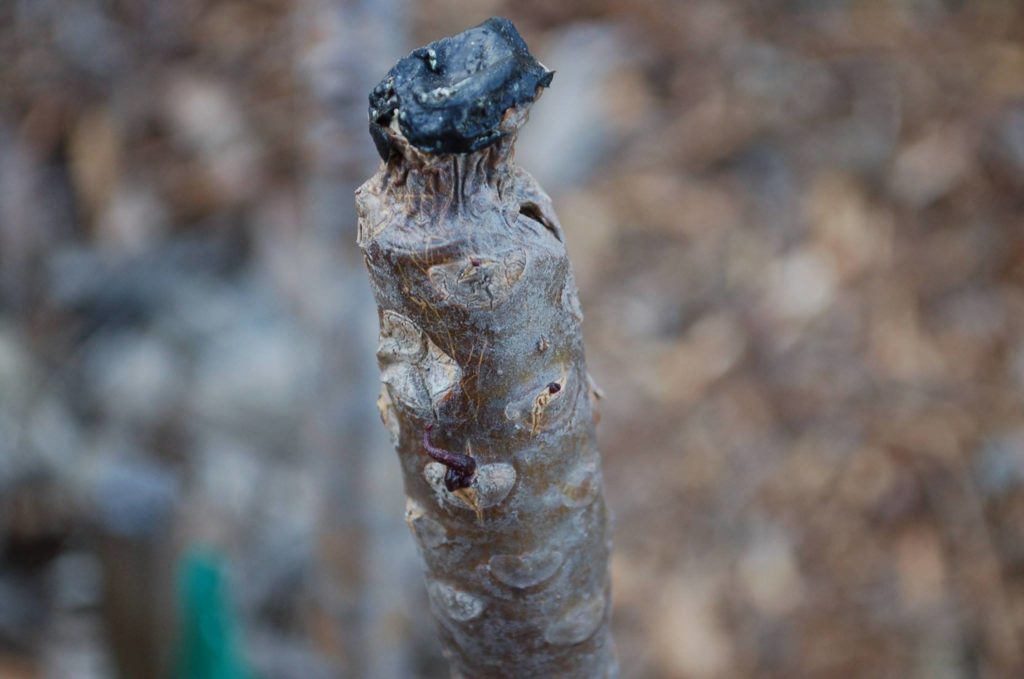
We have to cut off the rotted branch with a thin-bladed saw, each time wiping the blade with alcohol, until we reach white flesh, then cut another inch or two below that. Because plumerias are apical dominant, new branches will grow below that cut during the growing season. Cover the cut area with a sealant, like DAP or liquid electrical tape to keep moisture from causing further rot.
The other common damage is root rot. Again, this happens when the roots are wet and out in cold temps, as was discussed above.
So, you have a cutting
While fall and winter are the worst months to root a cutting, sometimes it’s inevitable. A branch breaks in Santa Ana wins, or a neighbor unknowingly prunes their tree, etc. Storing a cutting over winter is tricky because it’s liable to dehydrate, which can kill it. Here are two suggestions, but with no guarantees:
- Get a bucket that will fit the cutting or cuttings you have, pour 3-5″ of perlite in the bottom, and store either inside or under cover outside.
- Bag root your cutting and bring inside. In fact, a closet works well as the warmth may help it to root over winter. (They do not need sunlight to root.) Here is my bag rooting tutorial.
Also, to fight off dehydration, mist the cutting(s) with water every few days.
Bonus tips:
- Do not cut off your flower stalks/inflos in winter. Many of them will generate blooms the next year. But if you see inflos start to rot, definitely cut them off.
- If your plant has developed a seed pod during the growing season, it should be fine over winter. It will take the pod 8-10 months to open.
- If you can, it’s a good idea to let your plants stay out in the rain in autumn and then the spring so the clean, fresh rainwater will flush out the accumulated salt deposits from our city water.
Subscribe to our email notification list >
 Mike has owned a plumeria farm in San Diego’s east county on Mt Helix with his wife Stacy for nearly 30 years. The PBS program “A Growing Passion” featured them and their farm on their Emmy-winning episode featuring plumerias. He has taught plumeria workshops in Southern California (San Diego Horticultural Society, San Diego Botanic Garden, Master Gardeners, plus many garden clubs and nurseries), the International Plumeria Conference, and is the only person to speak at all plumeria societies in the US. He is a longtime volunteer and speaker with the Southern California Plumeria Society, has authored many articles and created videos, and has been interviewed many times, including in the Los Angeles Times.
Mike has owned a plumeria farm in San Diego’s east county on Mt Helix with his wife Stacy for nearly 30 years. The PBS program “A Growing Passion” featured them and their farm on their Emmy-winning episode featuring plumerias. He has taught plumeria workshops in Southern California (San Diego Horticultural Society, San Diego Botanic Garden, Master Gardeners, plus many garden clubs and nurseries), the International Plumeria Conference, and is the only person to speak at all plumeria societies in the US. He is a longtime volunteer and speaker with the Southern California Plumeria Society, has authored many articles and created videos, and has been interviewed many times, including in the Los Angeles Times.